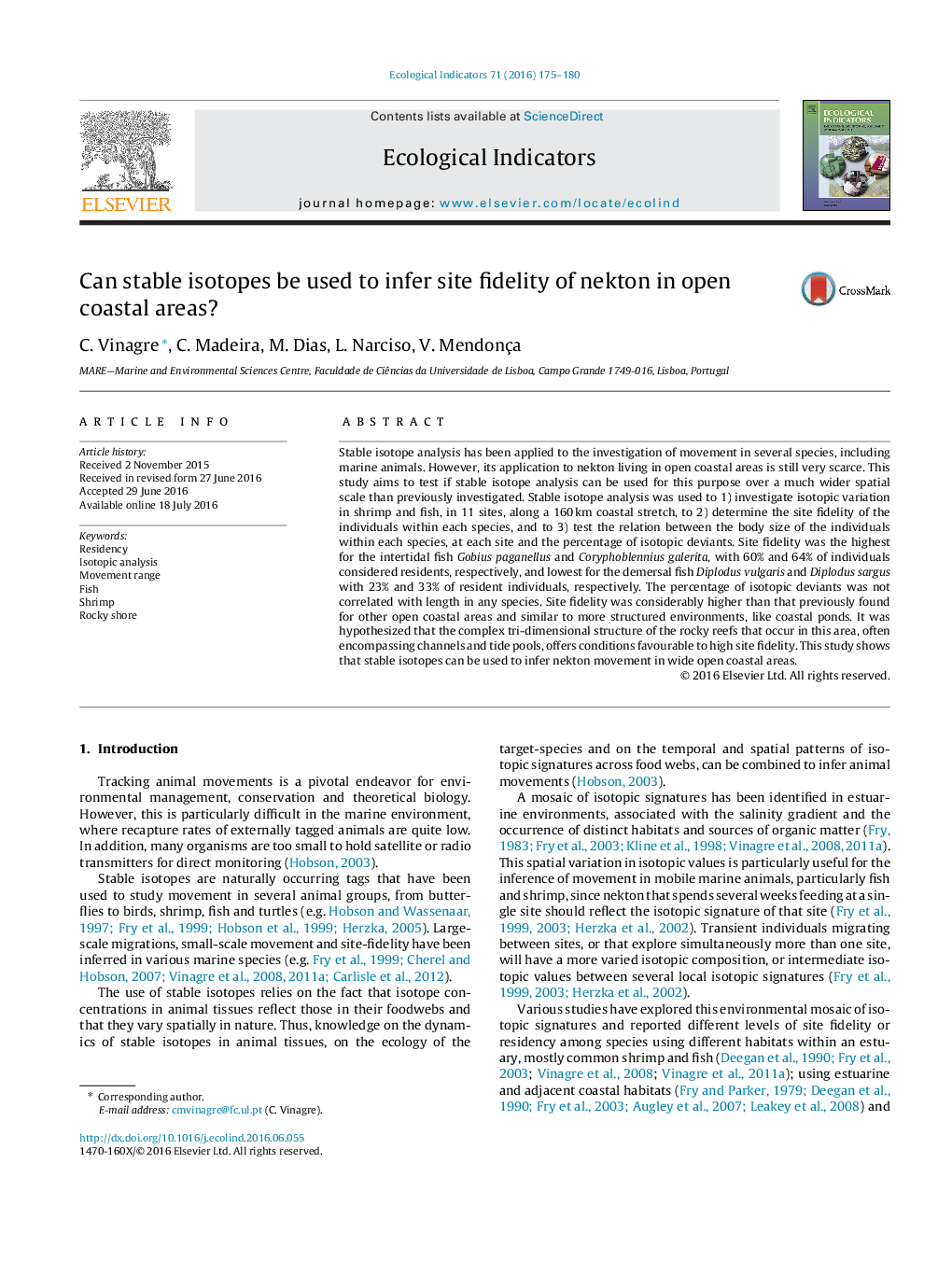| Article ID | Journal | Published Year | Pages | File Type |
|---|---|---|---|---|
| 6292921 | Ecological Indicators | 2016 | 6 Pages |
Abstract
Stable isotope analysis has been applied to the investigation of movement in several species, including marine animals. However, its application to nekton living in open coastal areas is still very scarce. This study aims to test if stable isotope analysis can be used for this purpose over a much wider spatial scale than previously investigated. Stable isotope analysis was used to 1) investigate isotopic variation in shrimp and fish, in 11 sites, along a 160Â km coastal stretch, to 2) determine the site fidelity of the individuals within each species, and to 3) test the relation between the body size of the individuals within each species, at each site and the percentage of isotopic deviants. Site fidelity was the highest for the intertidal fish Gobius paganellus and Coryphoblennius galerita, with 60% and 64% of individuals considered residents, respectively, and lowest for the demersal fish Diplodus vulgaris and Diplodus sargus with 23% and 33% of resident individuals, respectively. The percentage of isotopic deviants was not correlated with length in any species. Site fidelity was considerably higher than that previously found for other open coastal areas and similar to more structured environments, like coastal ponds. It was hypothesized that the complex tri-dimensional structure of the rocky reefs that occur in this area, often encompassing channels and tide pools, offers conditions favourable to high site fidelity. This study shows that stable isotopes can be used to infer nekton movement in wide open coastal areas.
Related Topics
Life Sciences
Agricultural and Biological Sciences
Ecology, Evolution, Behavior and Systematics
Authors
C. Vinagre, C. Madeira, M. Dias, L. Narciso, V. Mendonça,
